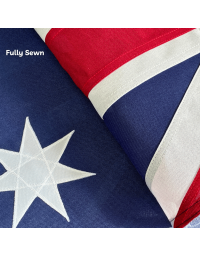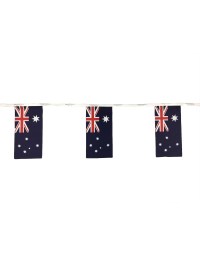The Symbolism of Anzac Day

Anzac Day is a time for solemn reflection and commemoration, as we pay tribute to the bravery and sacrifice of our servicemen and women. Central to this commemoration are the symbols that evoke the spirit of remembrance and honour. In this article, we explore the symbolism behind some of the most iconic emblems of Anzac Day, including the poppy, rosemary, and other significant symbols that hold a special place in our hearts and history.
The Poppy
The association of the poppy with remembrance originates with the famous poem "In Flanders Fields" by Lieutenant Colonel John McCrae, written during World War I. McCrae's verses described the poppies that flourished in the battlefields of Belgium, where countless soldiers had fallen. Inspired by this poem, the poppy became a symbol of remembrance for the sacrifices of our fallen soldiers. Today, the red poppy is worn or displayed as a tribute to their courage and resilience.
The Australian National Flag
The Australian National Flag has been a symbol of our nation's identity since its adoption in 1901. Featuring the Union Jack, the Southern Cross constellation, and the Commonwealth Star, it represents our historical ties to the British Empire and our unique place in the Southern Hemisphere. On Anzac Day, the flag is proudly flown during commemorative services and ceremonies, serving as a symbol of national pride and unity as we honour those who have served Australia.
Rosemary
Rosemary has been associated with remembrance and commemoration in various cultures for centuries, and was traditionally believed to improve memory. In the context of Anzac Day, rosemary's significance is deeply rooted in its symbolism of memory and fidelity. Rosemary grows on the Gallipoli peninsula in Turkey, where the ANZAC soldiers served in WWI and where so many lives were lost. During the 1980s, cuttings from the rosemary plants growing on the Gallipoli coast were planted in nurseries throughout Australia to support Avenues of Honour. Today, rosemary is often incorporated into Anzac Day wreaths and worn as a lapel pin, serving as a reminder of the sacrifices made by our ANZACs and a tribute to their legacy.
The Slouch Hat
The slouch hat, or "Khaki fur felt", has been a part of the Australian Army uniform since 1903. It was originally introduced to the Victorian Mounted Rifles by Colonel Tom Price in 1885, and went on to be worn by many Australian troops during the Second South African (Boer) War before being made an official part of the Australian Army uniform. Today, the hat is a well-known symbol of the Australian Army, usually worn with a Rising Sun badge on the upturned side.
The Rising Sun Badge
The Rising Sun Badge (officially, the Australian Army Badge) was worn by Australian servicemen and women in both World Wars, and is closely tied to digger tradition. The current design of the Rising Sun Badge was produced in 1991 and is the seventh iteration.
As we commemorate Anzac Day, let us honour the spirit of remembrance embodied by these iconic symbols. Each symbol we now associate with Anzac Day tells a story of courage, resilience, and enduring legacy.
Lest we forget.










